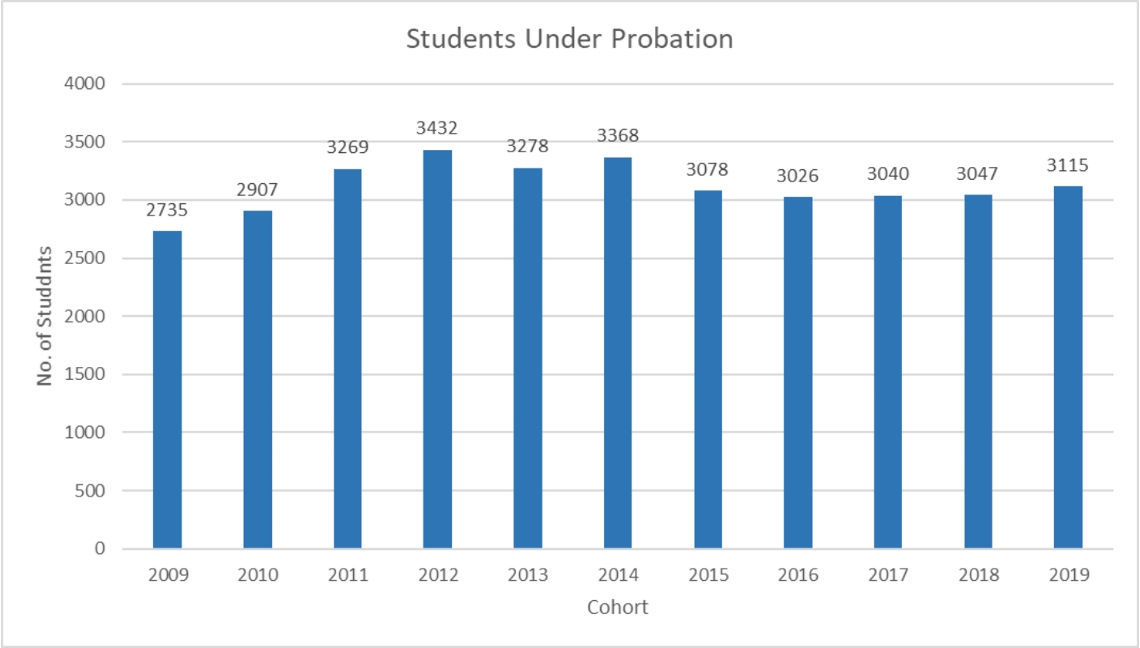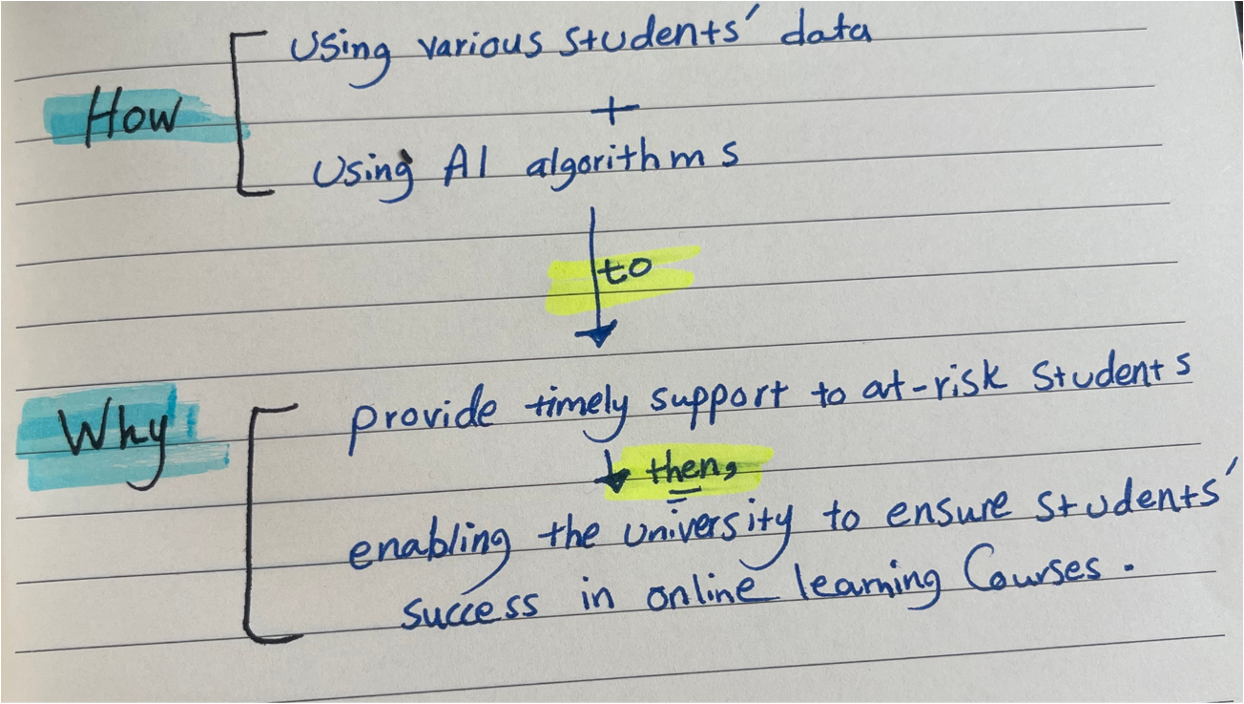Doctoral Research IDEA
Developing a Predictive Analytics Model (PAM) to Identify At-Risk Students in Online Undergraduate Courses at Sultan Qaboos University (SQU)
Initial Research Proposal
Asma, Y. Al Amari
Click here to read the..>>>.... PROPOSAL
Introduction
There are many challenges in the educational sector that affect the students’ academic performance, which impact the overall performance of higher educational institutions (Al-Alawi et al., 2023). One of the crucial concerns that higher education institutions (HEIs) have to deal with is the growth in the number of students on academic probation (Bowman & Jang, 2022). Some research has sought to examine the causal impact of academic probation on college grades, retention, and graduation (Bowman & Jang, 2022). Shyamala (2008) indicates that probation for more than one semester is one of the reasons for dropping out of college. As student performance is an indicator of the efforts of a university in measuring the quality of education it provides to its students (Al Hamdi & Edakkalayil, 2022), universities must keep an eye on their students’ performance and develop policies to ensure their success by using the large amount of data that is available in their databases (Kuyoro et al., 2013).
Using technology in many areas of education is becoming more and more common, as it becomes a necessity for effective and ongoing learning (Baneres et al., 2020). Learning Analytics (LA) is a fast-growing area in technology-enhanced learning research in higher education (Dyckhoff et al. 2012). It can be described as the measurement, collection, analysis, and reporting of data about learners (Siemens 2013). It has emerged as a science to understand and improve learning processes and employ educational data to support learners (Muñoz-Merino et al., 2023). With the development of learning analytics, relevant data cleaning, mining, and analytics techniques have been used to understand, report, and optimize online learning and learning environments (Paquette et al. 2015). In addition, it has been used for predicting a variety of crucial educational outcomes, like performance, success, and dropout rate (Pérez et al., 2018). Machine learning algorithms are used in the process of developing many of the predictive approaches used in LA contexts. There are various machine learning techniques that can be used to predict future students' academic performance, including Bayesian statistics, decision trees, clustering, regression, neural networks, support vector machines, and rule-based approaches. These machine learning approaches have substantial predictive power, enabling them to identify at-risk students in the early stages of a course (Jiao et al., 2022).
Online courses have become widespread in teaching and learning (Martin & Ndoye, 2016). With the advancement of e-learning and the use of online learning management systems (LMSs), the collection, analysis, and visualization of data in the learning context is more accessible. Thus, the research path has been shifted to using data derived from online platforms to gain new insights on how students learn and how to improve their learning performance (Picciano 2014; Siemens & Baker, 2012). Most platforms have recently provided LMS analytics through a variety of built-in reports. For example, learning analytics in the Moodle LMS can help in predicting students’ performance and learners who are at risk of failing a course or dropping out of the university. Based on that, teachers can deliver personalized and timely support. Predictive analytics in Moodle are useful for identifying potential barriers that students may face during their learning process. This allows educators to develop opportunities for early intervention and targeted support (Learning Analytics for Moodle, 2023). The identification of at-risk students was viewed as an opportunity to provide additional support to those students who needed it.
At this juncture of at-risk student challenges and opportunities for using learning machines and AI algorithms to identify at-risk students, there is a clear problem that justifies this research idea. While identification of at-risk students is considered significant (Howell et al., 2018) and several research have used machine learning (ML) and AI algorithms to predict academic performance, few studies aim to help the students who are struggling in their studies and categorized as on probation (Al-Alawi et al., 2023) in Sultan Qaboos University (SQU) context. The current study aims to examine the factors that may affect the performance of students on online courses, then extracting the related variables to develop a predictive analytics model. This predictive model may assist the teachers in identifying students who are at risk in an online course. By doing so, the university may enhance its support strategies, increase retention rates, and ultimately increase the academic success rates of its students.
Definitions
There are different meanings and definitions for the term “at-risk students” in the HEIs. While Novosel et al. (2012) define the term at-risk learner as: “a student who is in danger of failing to complete school with a basic level of academic proficiency” (Novosel et al., 2012, p. 348), the Iowa Department of Education defines it as: “any identified student who needs additional support and who is not meeting or not expected to meet the established goals of the educational program (academic, personal/social, career/vocational)” (Iowa Department of Education, n.d.).
For the purpose of this study, I will define an "at-risk" student as one who might not do well academically and might need extra help and tools to do better in their studies and improve their performance. There are many things that can put a student at risk of not finishing their studies (Baum & McPherson, 2019; Watson & Gemin, 2008). Regarding students on academic probation, they are defined as low-performing students with a low-Grade Point Average (GPA) and may ultimately be at-risk of withdrawing or dismissal from the college if their grades do not improve (Casey et al., 2018).
However, in the SQU context, the semester and cumulative GPAs are measurements of the student's semester and cumulative performance, respectively, as a weighted average of grades attained by students in all courses attempted. SQU uses GPAs as they offer a quick measure of students’ performance (Academic Advising: Student Handbook, 2017). Based on the sixth edition of the Undergraduate Academic Regulations, published in 2019 and obtained from the Deanship of Admission and Registration at Sultan Qaboos University, students are performing adequately if their GPA is 2.00 and above. Students would be at risk if their GPA fell between 1.00 and 1.99 by completing 9 or more credits in the first semester and on probation if the GPA fell below 2.00. Students at risk and on probation are required to visit their advisors to be able to use online registration.
In this study, we are using the term “at- risk students” to include both at-risk students and students on academic probation, as explained and defined in the SQU’s regulations documents.
Statement of Problem
One of the key issues facing the HIEs in Oman is the rise in the number of students on academic probation in 2019 compared to the previous four years (Al-Alawi et al., 2023). Based on the statistics obtained from the Deanship of Admission and Registration related to the business college at Sultan Qaboos University between 2009 and 2019, Al-Alawi et al. (2023) present the following figure:

Students on probation for academic years of 2009–2019 (SQU Annual Statistics Book 2019–2020 as cited in Al-Alawi et al., 2023).
The number of students on probation increased steadily from 2735 cases in 2009 to 3269 in 2011. In 2012, this number reached its peak and reached 3432. From 2013 to 2015, the number of students on probation fluctuated around 3300. In 2019, the number of students on probation increased again to 3115 after staying steady between 2015 and 2018 (Al-Alawi et al., 2023). Students who fall on academic probation must return to their normal status within two academic semesters to avoid academic dismissal (SQU Academic Procedure, 2020).
Thus, based on this data, it is important to highlight and predict the significant factors that cause poor academic performance, as there is an increase in the number of at-risk students who need targeted support mechanisms to help them stay on track.
Research Goals
There are three main research objectives: to identify the factors and variables that influence students’ academic success in undergraduate online courses (G1), to develop a predictive analytics model using AI algorithms to identify at-risk students and enhance students’ success rates (G2), and to measure the effectiveness of using such predictive model in online undergraduate courses at Sultan Qaboos University (G2).
Research Questions
This study will explore the following questions:
- What are the key challenges faced by online undergraduate students at SQU?
- How do those challenges affect the academic success of students in online courses?
- How do these challenges contribute to predictive model development?
- Which of the challenges can the model incorporate?
- Which of the challenges cannot be incorporated, and how could they impact the model?
- What is the effect of implementing the predictive analytics model on students' success and retention rates?
- How effectively does the model's predictive ability hold when tested against an external dataset or real-world observations?
Research Methods
This study will employ a mixed-methods research design to provide a comprehensive insight into the research problem. Focus groups OR/AND interviews will be used to delve into the students' experiences and insights about the challenges and factors that affect their success in online learning courses. The gained insights could be used by incorporating the identified variables into the predictive model development process, which may improve its accuracy and power. Additionally, quantitative data will be gathered using the tracking tools in Moodle to identify at-risk students and develop the predictive analytics model. This research will use both types of data, as the following table demonstrates:
Type of data | Who?(Source) | Why? (purpose) | How? (Tool) | What? |
Qualitative | Online undergraduate students |
| Focus Group OR Interview | 1- Factors that affect their academic success: (study habits, motivation, time management issues, challenges in online course) 2- Factors contributing to students falling under academic probation |
Quantitative | MOODLE platform |
| SQU records and learning analytics Tools in MOODLE |
|

The proposed steps of developing the predictive analytics model to identify at-risk students in an online undergraduate course at the MOODLE using artificial intelligence (AI) algorithms:


Click here to read the...... PROPOSAL
